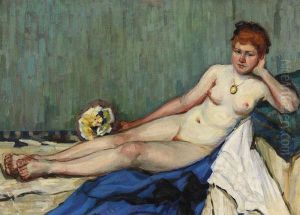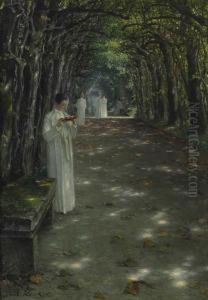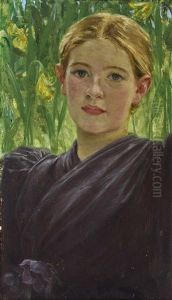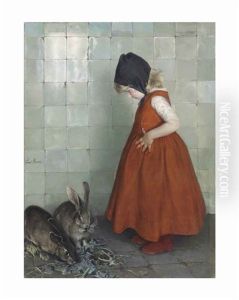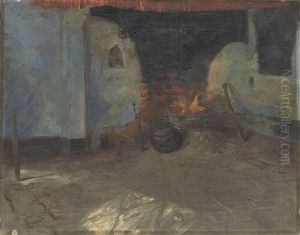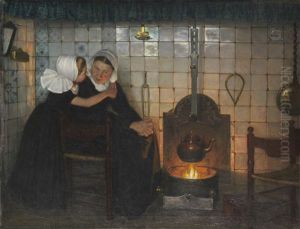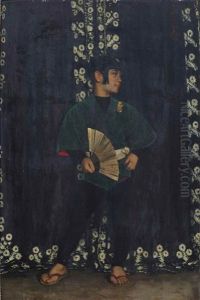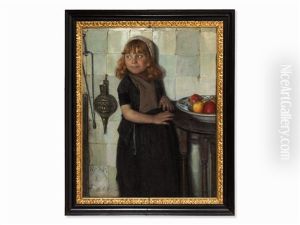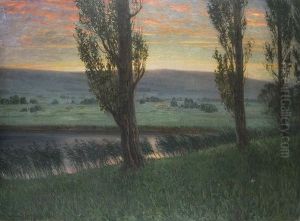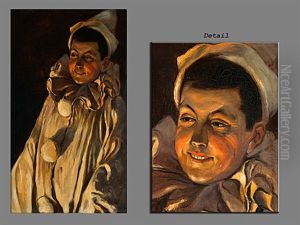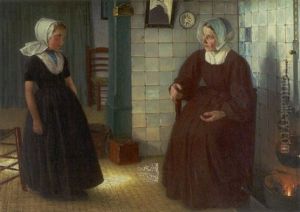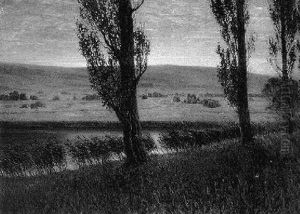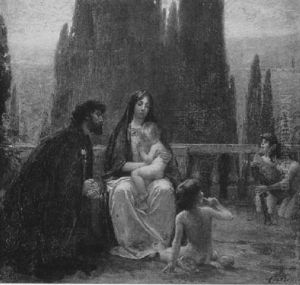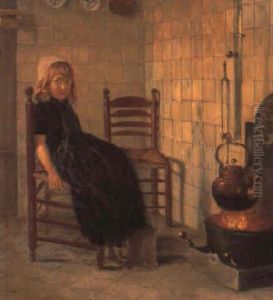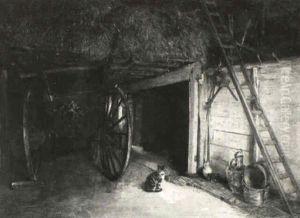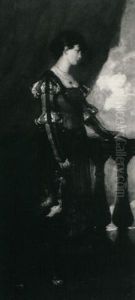Paul Hoecker Paintings
Paul Hoecker was a German painter and art professor, born on July 11, 1854, in Oberlangenau, Silesia (now in Poland). He was a significant figure in the Munich Secession movement, which sought to break away from the traditional academic art of the time. Hoecker studied at the Academy of Fine Arts Munich under the tutelage of Wilhelm von Diez, a renowned painter of the Munich School.
Hoecker's early work was influenced by the dark, naturalistic styles of the Munich School, but he later developed a lighter, more Impressionistic approach. His subjects included landscapes, portraits, and genre scenes, often infused with a soft, atmospheric light that reflected the influence of Impressionism on his work.
In 1891, Hoecker became one of the founding members of the Munich Secession, a group of artists who were frustrated with the artistic constraints imposed by the official art establishments. The Secessionists were inspired by similar movements elsewhere in Europe, such as the Vienna Secession, and aimed to provide more progressive and modern avenues for artists to exhibit their work.
Hoecker's reputation grew as he became known for his elegant depictions of scenes from upper-class life, often portraying the leisure activities of society women with a sensitive and delicate palette. His work was marked by a refined use of color and a fluidity of brushwork that captured the fleeting effects of light and atmosphere.
Beyond his painting, Hoecker was also an influential teacher. He served as a professor at the Academy of Fine Arts Munich starting in 1896. There, he played a pivotal role in the development of a new generation of artists. Among his students were well-known painters such as Leo Putz and George Hacker, who would go on to contribute to the further evolution of modern art in Germany.
Paul Hoecker's career was cut short by his untimely death on January 17, 1910, in Munich. Despite his relatively short life, his contributions to the Munich Secession and his role in the transition from the academic to modernist art in Germany were significant. Hoecker's works continue to be appreciated for their beauty and historical importance in the context of German art at the turn of the 20th century.
